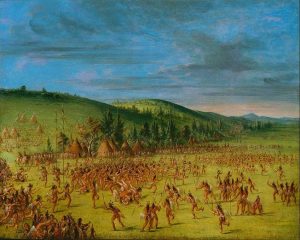Chapter 1: Recreation and Leisure Becomes an Industry
1.3 The History of Recreation and Leisure Becoming an Industry
Play and games have always been an important part of human life. Archaeologists have shown that people have been living and playing on what we now call the North American continent for over 500 generations. The dominant European-centric view does not recognize the oral histories of the First Nations, Metis, and Inuit’s (FNMI) peoples so Canada’s written history is lacking in detail of life prior to the arrival of European settlers on Turtle Island. However, through Truth and Reconciliation, FNMI’s history is slowly being restored to public knowledge so hopefully in future years a richer accounting of recreation and leisure for Turtle Island will be available to students.

The growth and development of recreation and leisure post-Confederation did not happen in a bubble, but rather paralleled the evolution of modern capitalism. As such, it has reflected the contours of social and cultural change that accompanied the industrial revolution. So, the initial emergence of organized sport forms in the mid-19th century has everything to do with the rise of industrial enterprise, the growth of wage labour, the expansion and increasing demands of the marketplace, the rapid growth of urban areas, the proliferation of industrial technology (especially advances in transportation), the invention of “leisure time,” and the growing confidence and recreational desires of the middle-class.

